A Texan stopped on a highway to rescue a Schnauzer-mix puppy and take him to Canyon Lake Animal Shelter Society (CLASS). Based on circumstances and the pup’s injuries, CLASS employees surmised he’d been dumped, thrown from a car. Perhaps in shock, the puppy cooperated with transport to the shelter. But soon the pup was raging, circling repeatedly in one direction, experiencing seizures, and biting at the slightest touch.
His conduct was so unusual, neurological damage was suspected. The pup was probably only 4-months-old, but he certainly wasn’t adoptable. After administering medical care, CLASS employees called Lara Stonesifer of Lara’s Canine Solutions in New Braunfels for a behavior evaluation. This was a pitiful, damaged puppy. Was rehabilitation even possible?
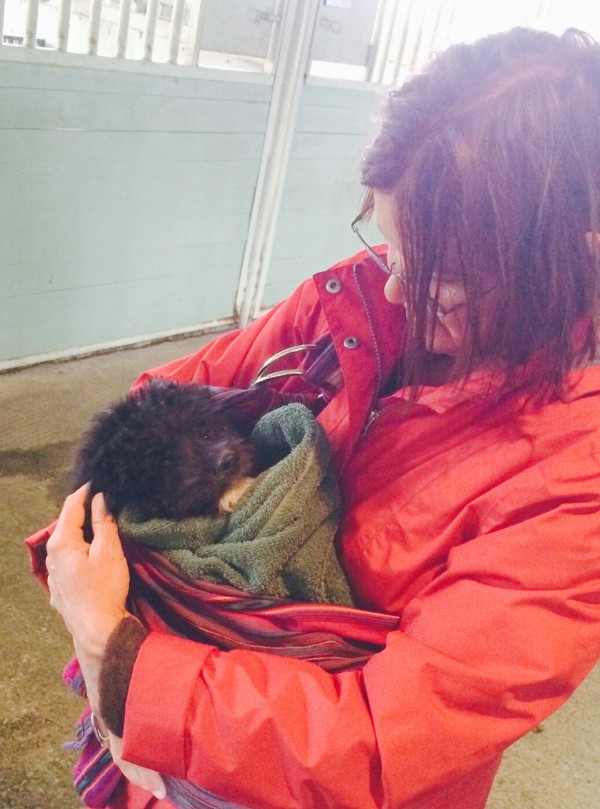
Richard Parker on the road to rehabilitation in Stonesifer’s arms. (Photo courtesy Lara Stonesifer)
Given the severity of the pup’s problems, Stonesifer brought him home for observation and care. With a house already filled with four German Shepherd Dogs, she didn’t intend to keep the puppy. “I planned on rehabbing him and fostering,” Stonesifer says. “Instead, he became my notable ‘foster failure.’”
The pup also became one of Stonesifer’s most noteworthy rehabilitation success stories.
“Because I believe names are important, I named him Richard Parker after the noble yet fierce tiger in Life of Pi,” Stonesifer says. “I wasn’t sure I could rehabilitate him, but I sensed he would provide an important life lesson for me.”
The rehabilitation began. Included in Richard Parker’s unusual behavior was an irrational anger about food. Treats and even his own bowl of food activated his rage. “He’d become increasingly stressed as he ate his food, seemingly convinced someone else was removing it,” Stonesifer says. “He didn’t connect that food was disappearing because he was eating it.” Clearly using treats as positive reinforcers wouldn’t work when they compounded his stress. And since the pup didn’t respond to toys, she couldn’t use play easily for positive reinforcement either.
“My only choice was to use a variation on the attachment parenting approach,” Stonesifer says. ”I carried him around in a sling, over time desensitizing him to my touch.” Given she couldn’t anticipate the triggers for the dog’s rage, Stonesifer muzzled him for safety. “Gradually, over time, I increased his ability to tolerate simple stresses, such as a door shutting or a dog walking by,” she says. Stonesifer knew that if she tiptoed around every irrational thing that caused Richard Parker stress, he wouldn’t recover. “I took him on outings and carried him around as I worked, building trust and teaching him to tolerate touch.”
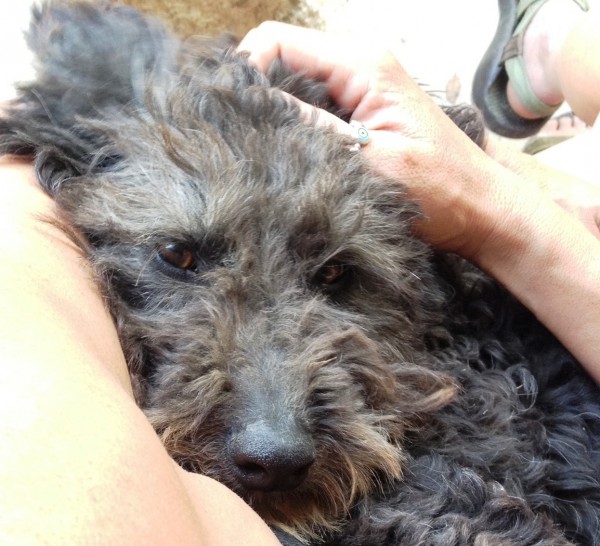
Richard Parker, nowadays a cuddler rather than a bundle of nerves. (Photo courtesy Lara Stonesifer)
From the beginning, Stonesifer’s German Shepherd Dogs, Jutta, Talulah, Voxy, and Frejya, generously gave Richard Parker a pass on his strange behavior. Showing no fear, Richard Parker would march boldly out into the yard. At times he’d bark and run in circles near the other dogs. “My dogs would hold any other new dog accountable, but they seemed to intuitively realize that Richard Parker wasn’t responsible for his peculiar actions,” Stonesifer says. “The adult dogs all but ignored him, regardless of how outrageous his behavior became.”
Stonesifer’s youngest shepherd, Talulah (now 2 years old), however, tried desperately to befriend Richard Parker. “She’d squirm to crawl under him to show friendliness and submission, but he couldn’t understand her communication,” Stonesifer says. Richard Parker’s ability to connect and communicate was minimal. “It was an extraordinary occasion when he finally whined to tell me that he needed to go potty,” she says.
Even as he slowly adjusted to home life and human touch, Richard Parker had difficulty making simple correlations. “It took him two months to figure out that when the crate door was open, he could come out,” Stonesifer says. “And even today, if I sneeze, for example, Richard Parker may run out to the driveway and run in circles, unable to make reasonable correlations.”
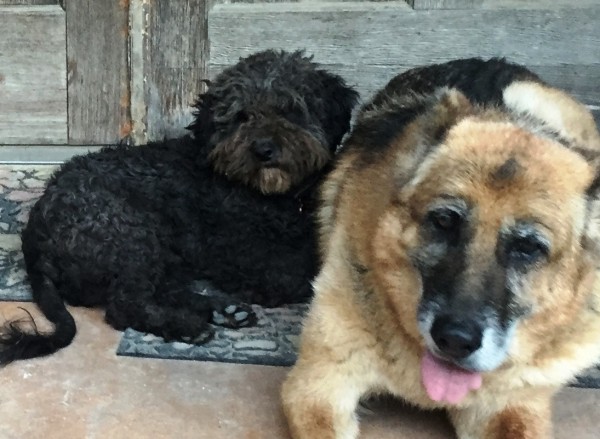
Richard Parker and his Shepherd friend. (Photo courtesy Lara Stonesifer)
Without treats or toys as rewards, how did Stonesifer teach Richard Parker to Sit, Stay, or Lie Down? “I molded him, guiding him gently with my fingertips for positioning, and then offering praise,” she explains. Most importantly, Stonesifer kept expectations realistic. “It’s an accomplishment that he quietly comes to lie down next to my bed at night,” she says. Expecting precise obedience isn’t realistic. “Even today, after some 3,000 repetitions, his Down Stay is at best 30 percent reliable,” Stonesifer says. “But I’m okay with that, given how many limitations he’s overcome.”
When Stonesifer first brought Richard Parker home over two years ago, he wouldn’t make eye contact, he screamed in his sleep, never wagged his tail, and raged at the simplest touch. Now he’s a snuggler, wags his tail happily, and makes meaningful eye contact. “By gradually increasing his tolerance to small stresses such as being touched, I moved Richard Parker to tolerating about 90 percent of today’s normal stresses,” Stonesifer says.
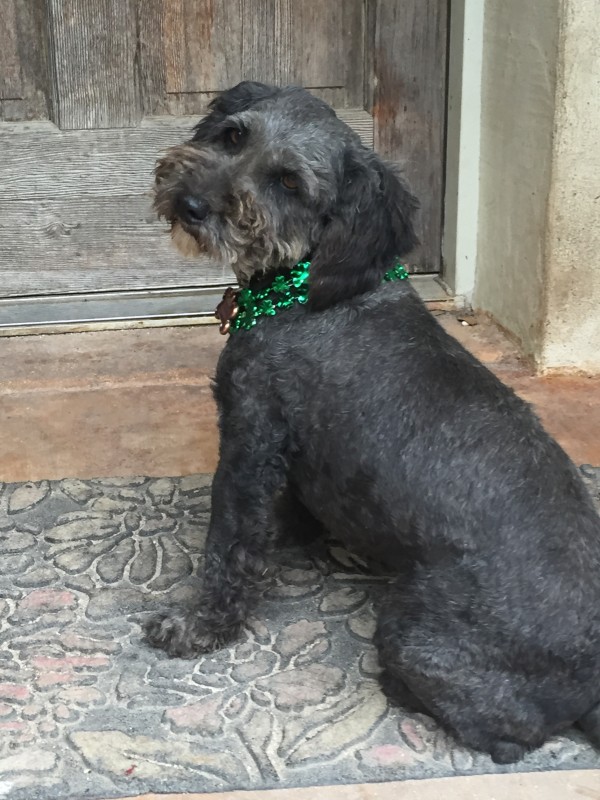
Richard Parker today, an eccentric but happy family dog. (Photo courtesy Lara Stonesifer)
Much has changed with his interaction with the German Shepherds, too. “Richard Parker now invites noodling [cuddling], not only with me, but with my dogs,” Stonesifer says. “Fortunately, the Shepherds reciprocate.”
Nowadays, Richard Parker’s rages are rare. “He’ll still become upset when, for instance, he gets stuck under the parrot cage,” Stonesifer says. “But his outbursts are infrequent and not nearly as intense.”
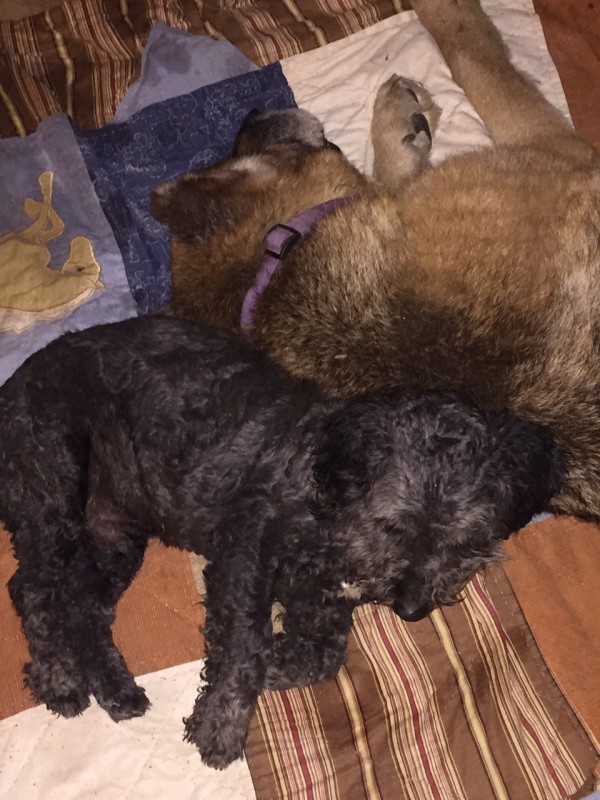
Richard Parker and 14-year-old German Shepherd, Jutta. (Photo courtesy Lara Stonesifer)
Richard Parker is chock-full of life. And Stonesifer’s family has followed their German Shepherds’ lead: “Like the dogs do, we give Richard Parker a pass on his remaining eccentricities,” she says. “He’s still rather odd, but he’s our boy, and an important part of our family.”
The post Puppy Thrown From a Car Heals Thanks to a Behaviorist and Her German Shepherds appeared first on Dogster.
No comments:
Post a Comment